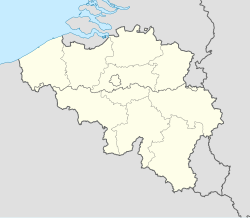Mutsaard | |
|---|---|
 Jupiter-Mercure and Orion-Sirius residences in the Mutsaard district | |
| Coordinates: 50°54′4.187″N4°21′37.973″E / 50.90116306°N 4.36054806°E | |
| Country | Belgium |
| Region | Brussels-Capital Region |
| Arrondissement | Brussels-Capital |
| Municipality | City of Brussels |
| First mentioned | 1297 |
| Time zone | UTC+1 (CET) |
| • Summer (DST) | UTC+2 (CEST) |
| Postal code | 1020 |
| Area codes | 02 |
Mutsaard or Mutsaert, also known as the Pagoda Quarter (French : Quartier des Pagodes; Dutch : Pagodenwijk) or De Wand, is an old hamlet and a historic neigbourhood of Brussels, Belgium. Located between Laeken and Neder-over-Heembeek and centred around the Place du Mutsaert/Mutsaertplaats or Mutsaardplein, it is separated from the rest of Laeken by the Royal Domain and is the site of the Museums of the Far East. The district also extends a little into the neighbouring Flemish municipalities of Vilvoorde and Grimbergen.




